A short and stocky dog, the English bulldog is the national symbol of England. These dogs are known for being courageous and stubborn, while also being incredibly loving to their owners. The breed was developed for bullfighting, but later was bred to be a friendly companion. The English bulldog is strong, but does not do well in heat, humidity, or water. Read on to learn more about the English bulldog.
Description of the English Bulldog
The English bulldog is a short, broad dog. Their wide chests plant their front feet further apart than their back – a cute feature that also makes them terrible swimmers. These dogs should look and feel strong and muscular, not soft and fat. They are quite low to the ground, but should not have a deep sway in their back.
This dog’s coat is short and tight over loose, wrinkly skin. They come in red, white, fawn, fallow, and any combination of these colors. The AKC does not allow the color pattern merle in this breed.
When the blood sport of bull-baiting was outlawed in 1835, the bulldog lost its job of over 500 years. Fanciers came together to breed the somewhat ferocious bulldog into a more amenable companion dog. By 1886, the English bulldog was an established breed in the AKC. Nowadays, the English bulldog is more known for his wrinkles and loud snores than his ferocity in the ring.
Life Expectancy and Size
The English bulldog has a tragically short lifespan of just eight to ten years. This is largely due to joint and breathing issues from their extreme face and chest shape. Historically, this breed had longer legs, a longer nose, and more reasonable shape overall. The extreme shape of this breed has led to a plethora of health concerns.
The English bulldog stands roughly 14-15 inches tall at the shoulder, and should weigh 40-50 pounds. Males should be slightly heavier than females. Keeping this dog fit and trim is one of the best ways to extend his life.
Protective Ability
The English bulldog is usually outgoing and friendly with family and friends. These dogs aren’t natural guard dogs, unlike other breeds within the “bully” group. However, the English bulldog is still a formidable guard dog when properly trained.
Unfortunately, the joint and breathing issues for this breed make them ill-suited to any level of athleticism required for proper guard dog work. The bulldogs of the 1800s would have been far better suited to protection work than the roly-poly companions we have today.
Training
This breed is known for its stubborn nature, doggedly pursuing what they want until they get it. A skillful trainer can take advantage of this, teaching the dog to behave properly in order to get access to what he wants. This breed will push back against harsh training methods, and does not respond well to corrections. Training a bulldog is the art of making your dog think that doing the right thing was his idea.
Thanks to their breathing issues, the English bulldog should never be fitted with any sort of training collar. This breed should be walked on a comfortable harness to avoid restricting their breathing further.
The English bulldog is not a natural choice for many dog sports, and should avoid swimming. However, some English bulldogs succeed at obedience and other low-impact sports.
Energy Level
The English bulldog is quite the couch potato. He tires quickly, is bad at cooling down when hot, and should avoid heat, humidity, and water alike. In short, most English bulldogs do best with a short walk or two each day. They still enjoy being left with puzzle toys while you’re gone for work, but don’t worry about getting new running shoes because you’re bringing a bulldog home.
What Living with an English Bulldog is Like
As long as you’re ok with loud snores and a strong dog, the English bulldog is a great companion for many homes. They are generally well-mannered with kids and visitors, especially when properly trained and socialized. This social dog will enjoy quality time with you, and might spend hours drooling on your lap.
This breed is not the best choice for active homes that want a dog to take with them on hikes or jogs. This breed is also not the easiest choice for owners who are excited about competing in any sort of dog sports.
Care of the English Bulldog
The allure of this breed is partially due to its low energy levels and loving nature. That said, the English bulldog’s plethora of health concerns can make them a time-consuming and expensive pet later in life.
Environmental Needs
This breed is extremely vulnerable to humidity and heat. Panting is difficult, thanks to their ultra-short noses, and they overheat with alarming ease. Their short coat and stocky build do best in moderate temperatures. Their short legs and broad chests make these dogs terrible swimmers, who should not be left unattended near bodies of water.
Exercise Needs
The English bulldog needs minimal exercise. They often enjoy tug-o-war, but otherwise are content with walks and puzzle toys. Avoid strenuous activity with your English bulldog, or risk overheating him, which is extremely dangerous for this breed. Weight management is important for extending their short lifespan. Because cardio exercise is not for these dogs, careful monitoring of their food intake is necessary to keep them at a healthy weight.
Shedding and Grooming
This breed sheds less than some other short-haired breeds, but still requires regular brushing during seasonal shedding. The AKC recommends brushing them two to three times per week. A bath during the summer months will help rid their coat of dirt and oil. Don’t neglect your bulldog’s nail care and ear cleaning. English bulldogs with skin issues will need far more extensive grooming.
Ideal Home Environment
This breed does well in a wide variety of homes, including – proper socialization – homes with children. This dog can also succeed with single or busy owners. They are very strong, and don’t always do well when being walked by frail, elderly, or young owners. Keep this in mind if you’re looking for a low-energy breed due to your own strength.
Health Concerns
The English bulldog is plagued with many health concerns. This breed’s extreme head and body shape has led to many issues, thanks to breeders that focus on the shape of the dog, rather than its health or performance.
The English bulldog is vulnerable to many types of breathing issues, overheating, skin allergies, eczema, acne, dry skin, arthritis, degenerative spine disease, cherry eye (a disorder of a membrane in your dog’s eye), hip dysplasia, joint and ligament issues, head tremors, infections in their skin folds, heart disease, and elbow dysplasia. Finally, the English bulldog also has the highest rate of cancer of any breed.
Behavior Problems
The English bulldog can be a bit less friendly with strangers than their owners like. While picking a good breeder and a friendly puppy can help, it’s also important to take your new puppy to puppy kindergarten. Focus on teaching your puppy to calmly ignore strangers, and encourage strangers to only interact with your dog if your dog seems to want to “say hi.” Never force your puppy to greet a person that they’re uninterested in.
Teaching your English bulldog that he can earn rewards by behaving well can mitigate stubborn tendencies.
If you have any concerns about your dog’s behavior, contact a dog behavior consultant. A behavior consultant is far more skilled at dealing with problem behaviors than an average obedience trainer. Avoid trainers who rely heavily on corrections, particularly thanks to the dangers of using training collars on short-nosed breeds.



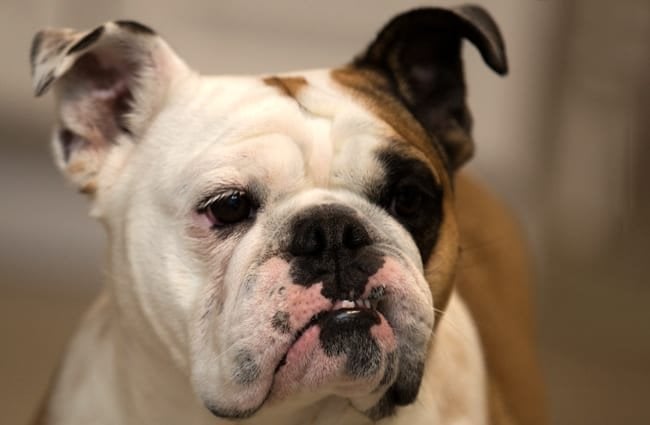
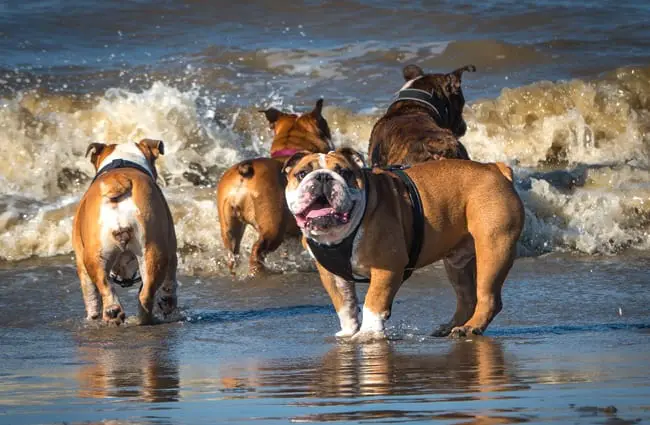
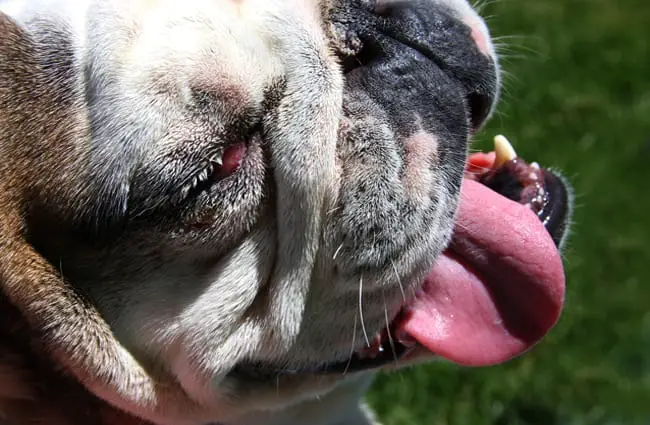
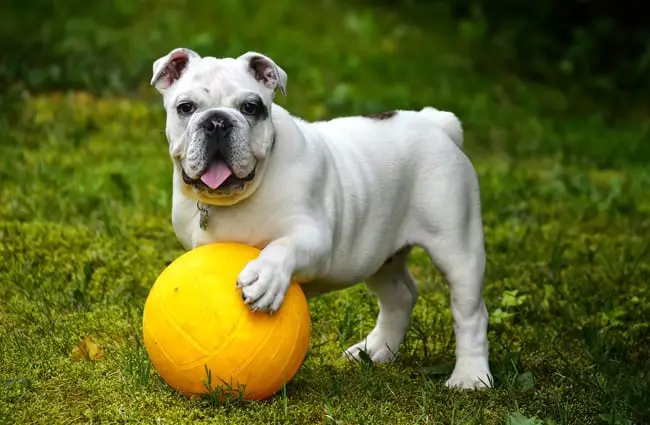


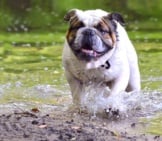

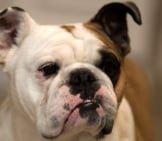
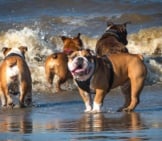
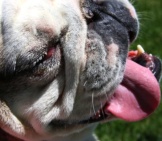
















![Red Angus Closeup of a beautiful Red Angus cowPhoto by: U.S. Department of Agriculture [pubic domain]https://creativecommons.org/licenses/by/2.0/](https://animals.net/wp-content/uploads/2020/03/Red-Angus-4-100x75.jpg)

